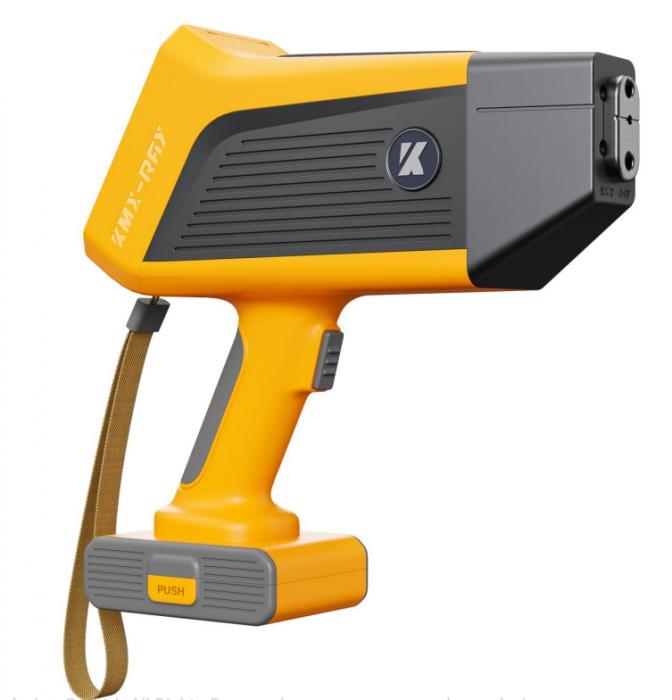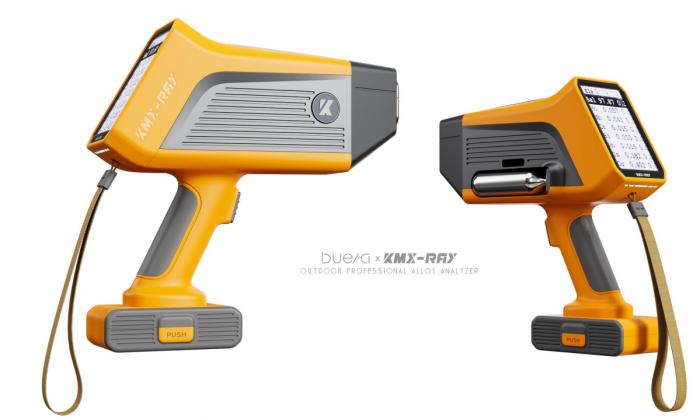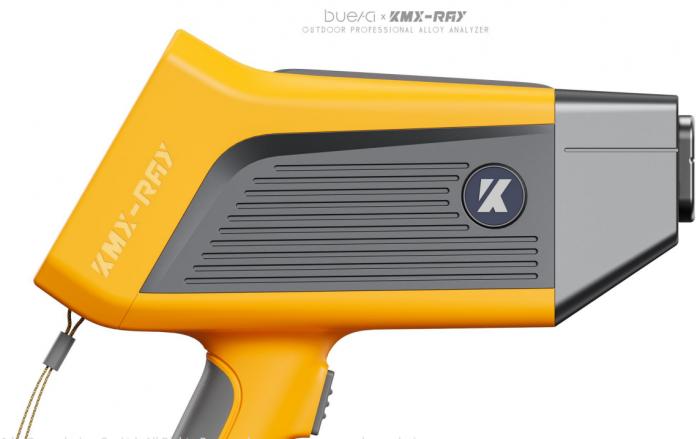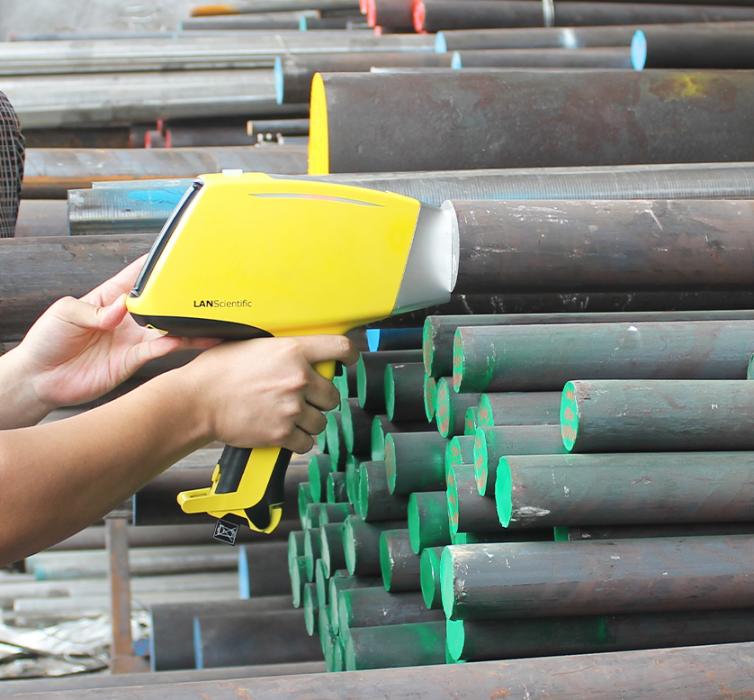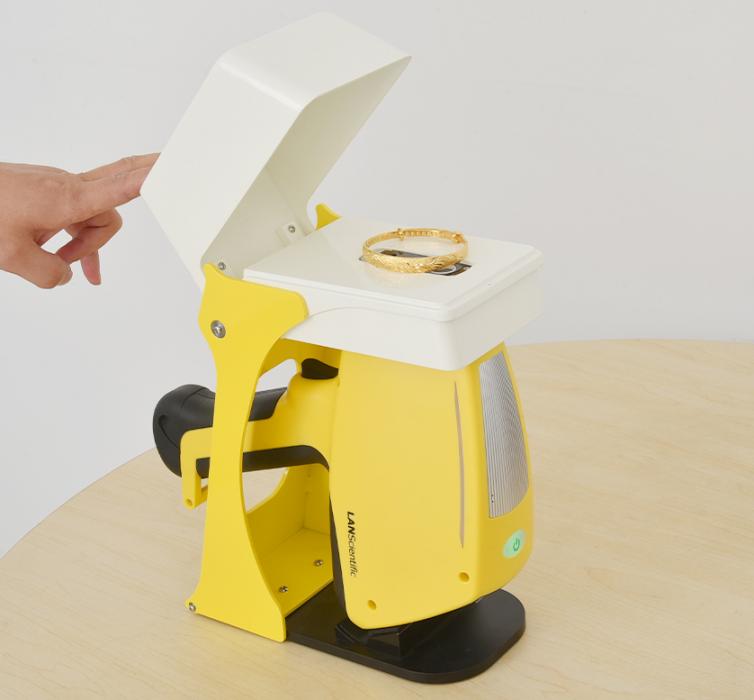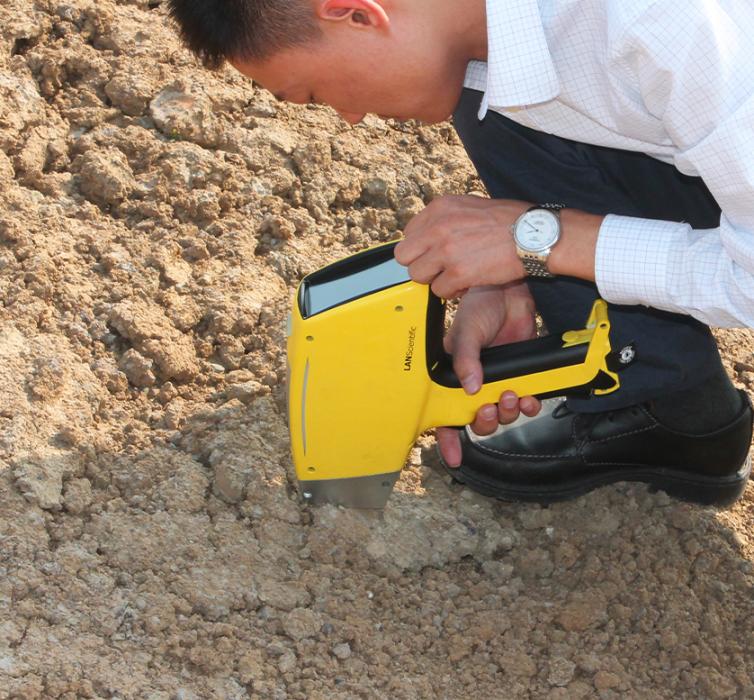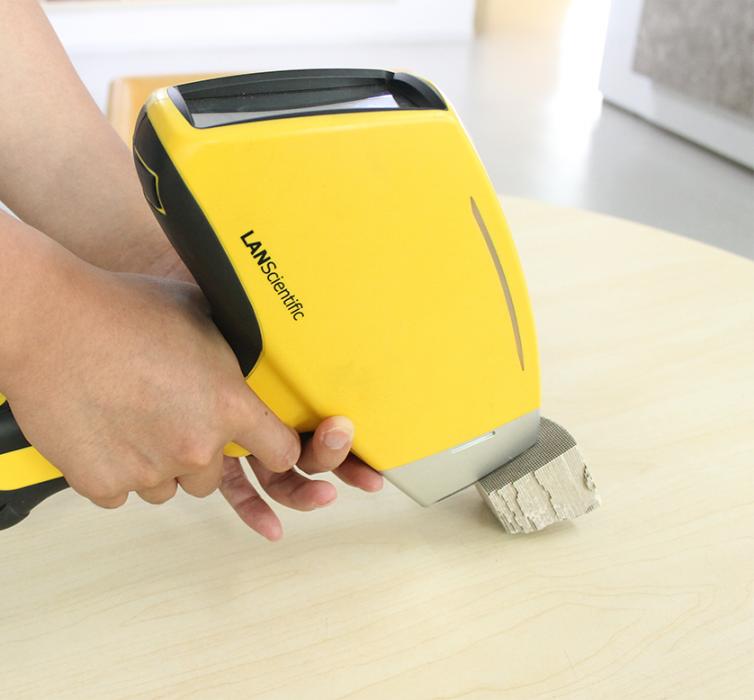| Name: | Handheld Lithium Ore Analyzer |
|---|---|
| Weight | 1.98Kg |
| Size | 12.5x 5.25 x 12.5 inch |
| Dispaly | 4 inches high brightness color touch screen |
| Power supply | 14.4V loaded with rechargeable lithium-ion battery, rechargeable with built-in or external charger, AC power supply. |
| Data storage | 32GB SD |
| OS | Raspberry Pi OS |
| Laser grid | Airborne 3D direction-driven laser for analysis and averaging at different discrete locations. |
| Test atmosphere | The inert argon environment improves the spectral signal-to-noise ratio and improves the signal acquisition performance in the ultraviolet range. |
| Calibration Self-Test | Automatic calibration and wavelength scale verification. |
| Ethereal correction | Automatic drift correction software with factory-supplied or user-supplied references. |
| Certificate | Comply with CE, RoHS, USFDA registration. Class 3b laser. On-load sample sensors may be operated under Class 1 conditions subject to local LSO approval. |
| Spectral range | 190~950nm |
| Calibration curve | The original factory provides geochemical calibration curves and allows users to build their own matrix calibration curves. |
| Safty | Password protection; configurable multi-user access to setup interface. |
Precise Elemental Analysis
X-898 Instruments high-end handheld LIBS ore analyzer can be used to measure lithium in lithium ore, rock and brine. Customers can add interesting elements according to their needs.
• The intense laser delivers 5-6 mJ/pulse on the sample with a repetition rate of 50 Hz.
• Laser grid allows rapid sampling of multiple locations in one test for more complete data.
• Analytical averaging can be used for multiple bombardment averaging and data rounding.
• Sample calibration miniature camera and LED spotlight to focus where you want it.
• Small aperture for unrivaled small-parts analysis.
• Embedded argon purging, high precision and high detection limit.
Raspberry Pi operating system and app-based software guarantee quality inspection for every operator. Built-in WIFI and Bluetooth, with GPS capabilities, allows users to print, email, and connect to almost any information management system for full-featured reporting. Operations can be easily managed from anywhere.
Designed for outdoor and laboratory use
LIBS X-898 Handheld LIBS Analyzer 1.98 kg (with battery),
High resolution rear display for easy viewing; Rugged metal body for maximum durability;
Tapered narrow mouth for difficult-to-access test sites;
The argon gas is user replaceable for a few cents per test and can perform hundreds of tests.
Pair with PC or Tablet Profile Generator software and achieve full desktop functionality.
At present, the main method used for lithium ore and lithium salt is laboratory chemical analysis. In order to quickly determine the lithium content in spodumene ore and salt lake brine, Stark Instrument has launched a dedicated handheld laser lithium ore analyzer, which can quickly screen lithium ore and cores, including lithium and beryllium in brine and hard rock , Analysis of boron and carbon elements. Compared with the chemical analysis method in the laboratory, the Stark handheld laser lithium ore analyzer is suitable for on-site analysis of lithium ore, and the detection speed is fast. It can be taken to the lithium ore site for detection, which greatly saves analysis time and improves Analytical efficiency. LIBS X-898 adopts advanced high-power miniaturized nanosecond laser technology, which can be used on-site after short training for operators, and can quickly complete the qualitative and quantitative analysis of lithium content in lithium ore. For lithium prospectors, it brings a brand-new on-site ore composition detection tool, which greatly improves the efficiency of exploration work. For lithium ore trading enterprises, it saves the time spent from sampling, inspection, and report to transaction, and avoids transaction risks caused by large changes in the price of lithium ore. , LIBS analysis does not require complex sample preparation processes, nor does it require the deployment of various chemical reagents. Usually according to traditional analytical techniques, this needs to be done using methods such as laboratory chemical analysis or ICP equipment and flame atomic absorption spectroscopy.

